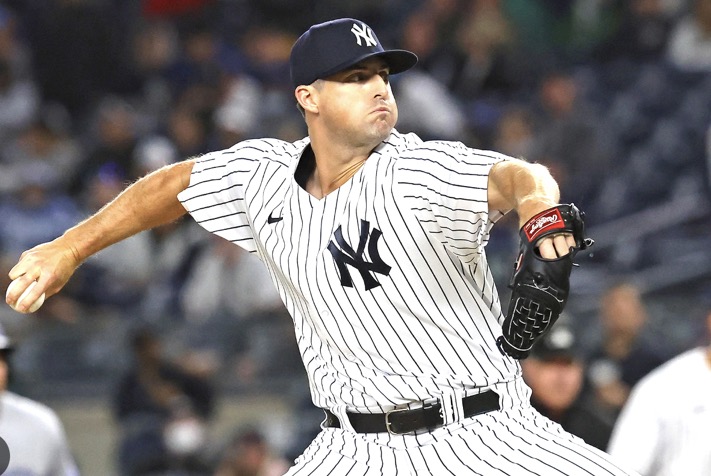
Welcome back to the “How to” series on pitching, where we will be diving into various pitches and speak about different grips, cues, tips, movement profiles, and even top MLB comparisons for reference when looking at a given pitch. Next up, how to throw a sinker or 2-seam.
Overview
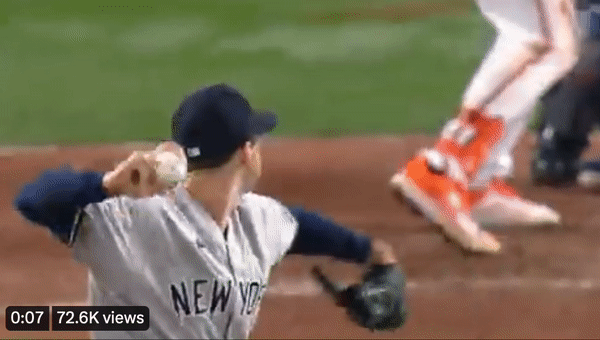
The sinker and 2-seam are both classified as “fastballs” due to the similarity in velocity to the 4-seam. However, they are different due to the amount of side spin these pitches have compared to the 4-seam. This differentiation in added side spin will cause the sinker and 2-seam to “run” and “dive”. The sinker and 2-seam are two variations of a very similar pitch. Sinkers and 2-seam will typically possess similar amounts of horizonal break and “arm side run”. However, a sinker pitch will have less vertical break than the 2-seam causing it to appear more like its “diving” or “sinking” as opposed to the 2-seam that “runs” or “rides”.
In this article, we will be taking a deep dive into a few different grips and cues to help you throw your sinker and 2-seam more effectively and efficiently.
Desired Movement Profile
Before we talk about the tips and tricks on how to throw a sinker and 2-seam, let’s review how we want this pitch to move.
As we have discussed already, sinkers and 2-seam will have more horizontal break to the pitcher’s arm side than a 4-seam. We ideally look for 15+ inches of HB. The differentiator between these two pitches will be the amount of vertical break the pitch has. Ideally, both pitches will possess substantially less vertical break than the 4-seam within your arsenal. Typically, a 2-seam will have around 10 inches of VB whereas the sinker will have < 10 inches of VB (often between 5-9).
Example of Sinker Movement
Example of 2-seam Movement
Ideal Sinker and 2-seam Location on a Movement Chart
A movement chart is a tool that players and coaches can use to analyze the ideal movement and placement of a given pitch.
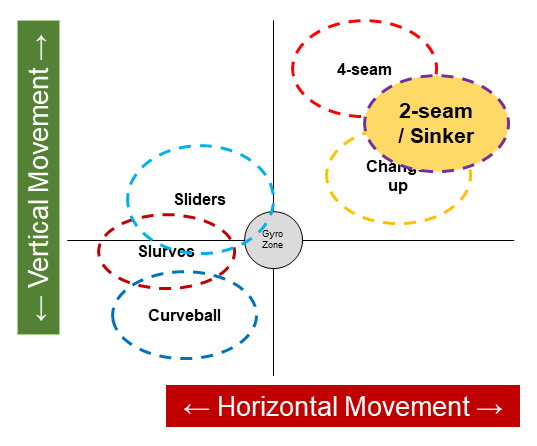
What each zone represents:
-
- The grey circle in the center of the chart represents the “gyro zone” which is no movement in either the vertical or horizontal plane.
- The upper right quadrant represents positive vertical movement and positive horizontal movement.
- The upper left-hand quadrant represents positive vertical movement and negative horizontal movement.
- The lower right-hand quadrant represents negative vertical movement and positive horizontal movement.
- The lower left-hand quadrant represents negative vertical movement and negative horizontal movement.
The chart pictured above is representative of a right-handed pitcher’s ideal placement for each pitch. A sinker pitch or 2-seam are pitches you want to “run”, “dive”, or “sink” out of the pitcher’s hand. This means it will have positive horizontal break towards the pitcher’s arm-side and maintain some degree of positive vertical break as well. This puts the upper right-hand quadrant as the most ideal for right-handed sinker and 2-seam.
For lefties, the vertical break would stay the same. But the horizontal movement that would be desired would have negative value. Therefore, making the upper left-hand quadrant the most ideal for a left-handed sinker and 2-seam.
Interested in learning more about remote programs, you can simply click below to schedule a phone call.
Sinker and 2-Seam Grips
Due to the similarities between the sinker and 2-seam, the grips utilized to throw these pitches often overlap. The differentiator between getting sinker movement vs. 2-seam movement will come from how you release the pitch.
Grip #1: Standard
For this grip, the athlete will grip the baseball inside the seams pictured below with their pointer and middle fingers. The thumb should be placed directly underneath the baseball opposite these fingers. The ring and pinky finger should be tucked off to the side.
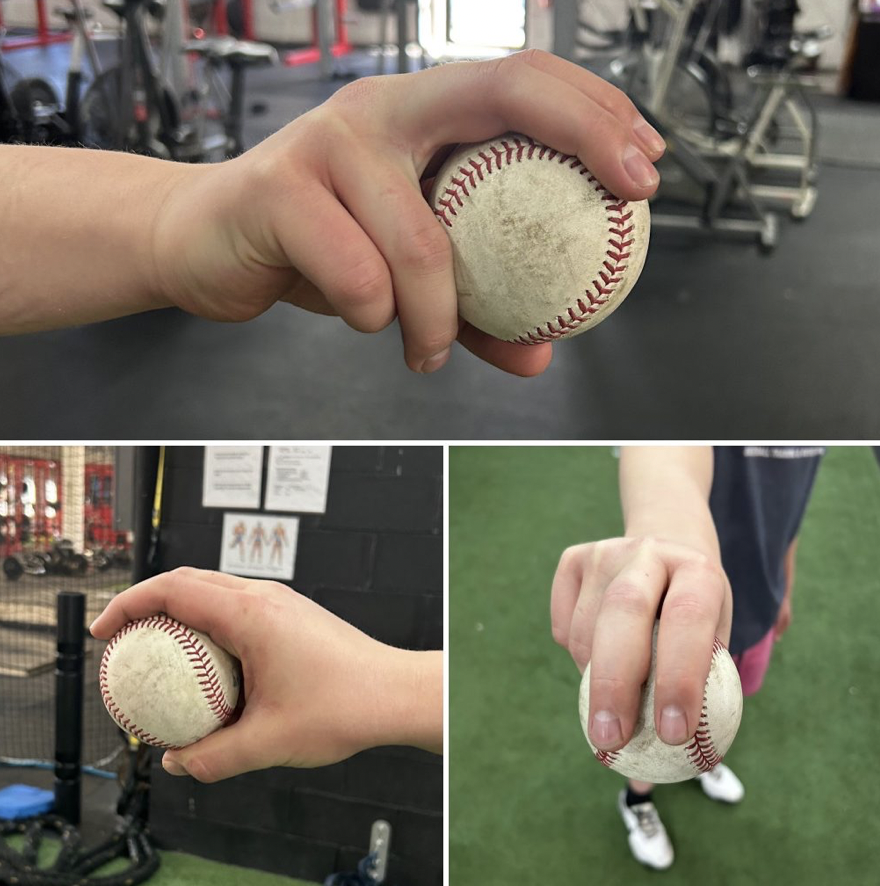
Grip #2: On-seam
For this grip, the athlete will grip the baseball with the same fingers and along the same seams as the standard grip. The only difference will be that the fingers will rest on the seams, instead of inside them. This grip can give the athlete a different feel from the traditional 4-seam which can help differentiate the release of the pitch as well.
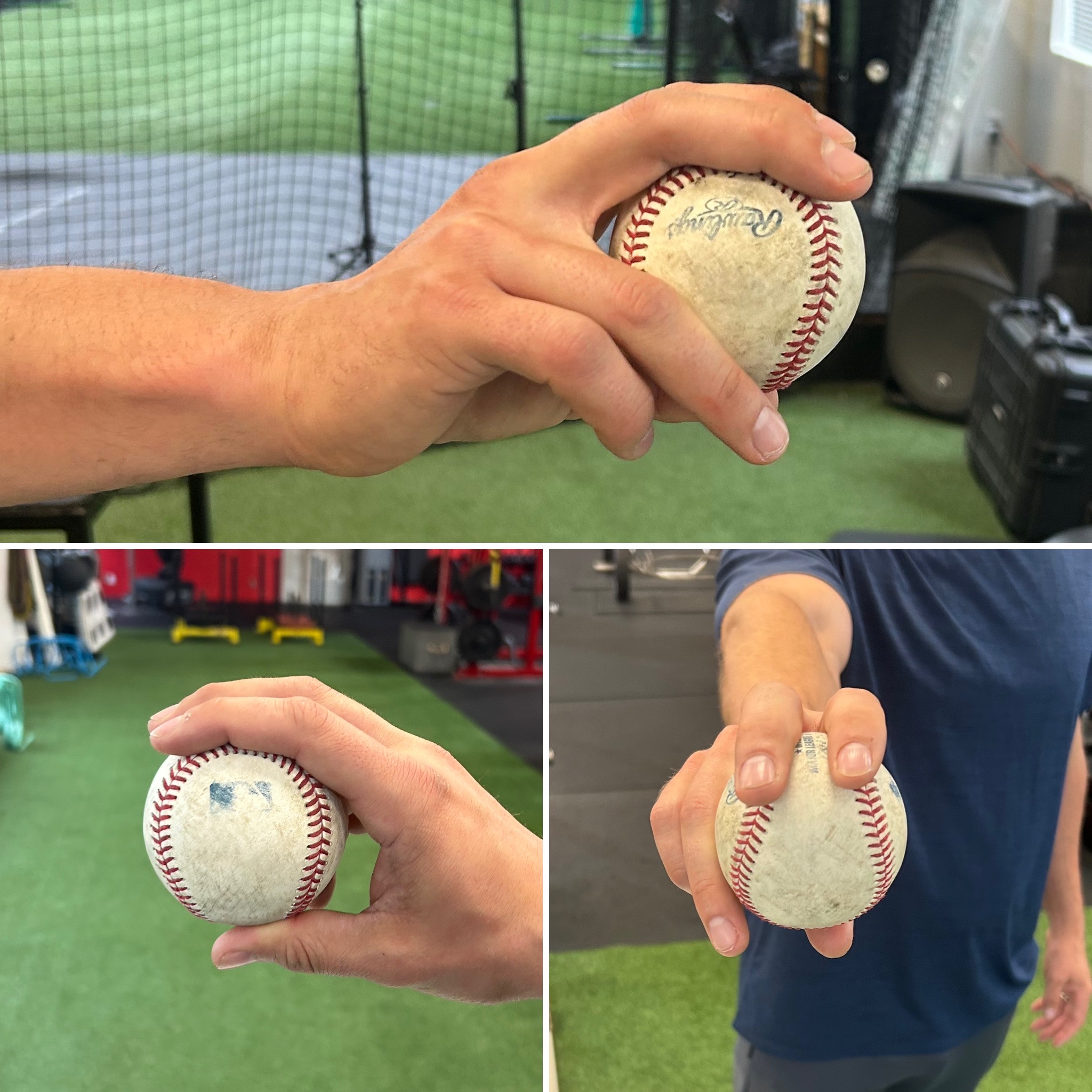
Grip #3: Off-set
For this grip, the athlete will grip the baseball with the same fingers and along the same seams as the standard grip. The only difference will be that the ball will rest offset slightly to the traditional grip. This grip can give the athlete more of a seam to rip off and create more middle finger pressure during release. Both of these added feels can help the athlete create more movement on this pitch.
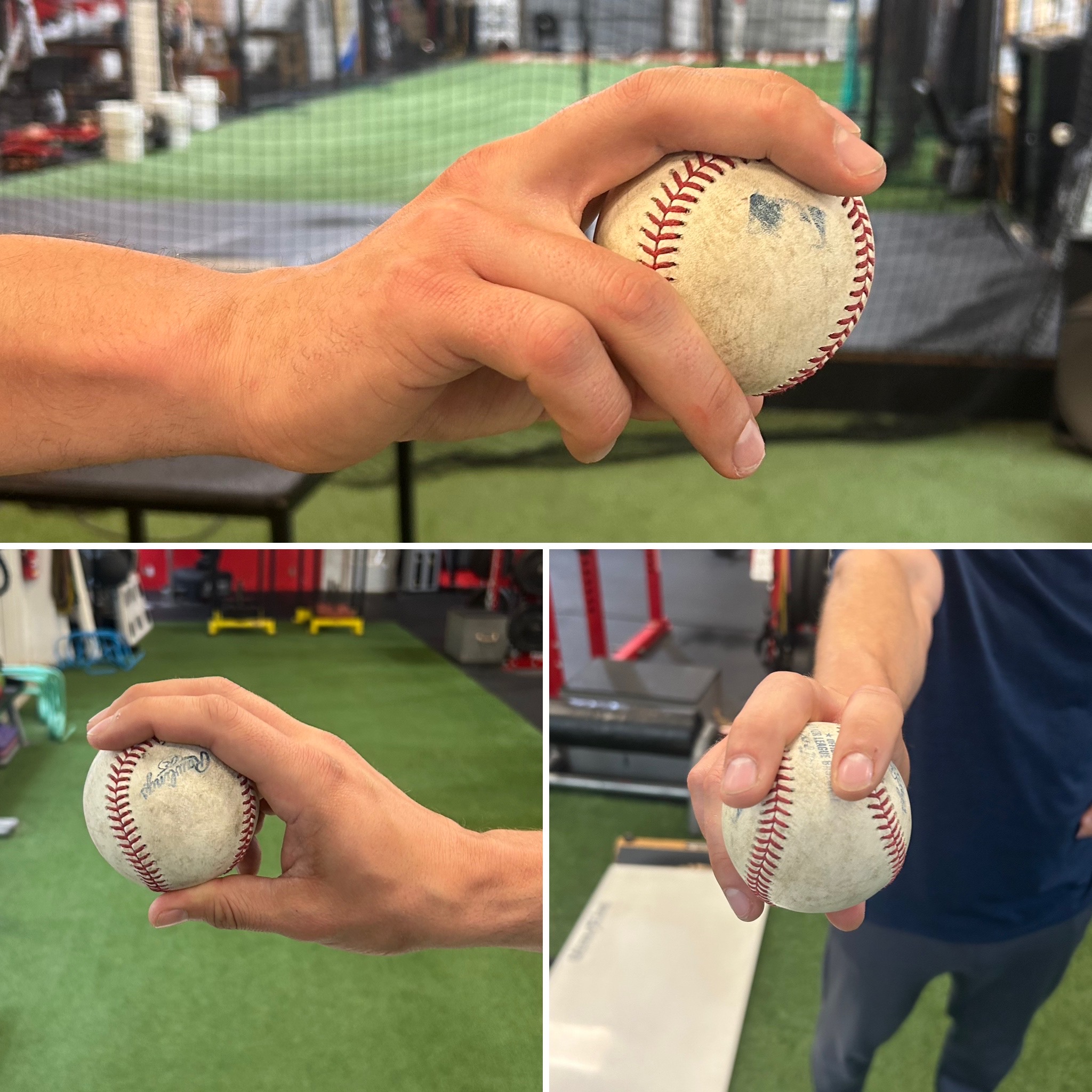
Cues to Help You Throw a Sinker or 2-seam
Let’s start with this… throwing cues are NOT ONE SIZE FITS ALL!
There are several different cues that one can use when teaching pitchers how to throw each pitch. You need to find which cue best suits YOU and helps YOU throw your pitch more effectively.
As mentioned earlier, the goal when throwing a sinker or 2-seam is to generate side spin. The side spin is what will help the pitch move more within the horizonal plane. With some athletes, applying different finger pressure will naturally allow them to create this side spin, and sometimes it takes a verbal cue to allow the athlete to feel how this pitch is supposed to be released.
Some cues that we use with our guys are:
-
- Throw the pitch with more pointer finger pressure
- Swipe the ball leading with your pointer finger
- Feel your fingers coming off the ball horizontally (compared to vertically with a 4-seam)
- Throw your sinker or 2-seam with a similar feel to your change-up
Sinker (left) vs. 2-seam (right)
Sinker or 2-seam Data
What we like… What we don’t like… (Specifically for athletes who have access to data tracking devices such as Rapsodo, Trackman, Pitch Logic, etc.)
What we like to see:
-
- More horizontal and less vertical movement compared to 4-seam
- More tilt on spin-axis vs. 4-seam
- Relatively consistent spin axis from pitch-to-pitch
- Needs to have a different “break path” than our 4-seam
What we do not like to see:
-
- A pitch that too closely resembles the 4-seam (in terms of movement)
- Path that stays straight, or cut action on it
Tunneling Tips – When and Where to Throw a Sinker or 2-seam
The sinker plays well off of the following off-speed pitches:
-
- “Running” changeups
- “Gyro” sliders
- Splitters
Sinker Overlay
The 2-seam plays well off of the following off-speed pitches:
-
- “Running” changeups
- “Sweeping” sliders
2-seam Overlay
All these pitches operate on the horizontal plane and try to limit vertical movement and capitalize on increased amounts of horizonal movement. This means that it will be easier for the pitcher to tunnel these pitches out of release and create a sense of deception to fool the hitter.
Sinkers, having more “dive” will play better of the “gyro” slider and splitter which also have more downward movement. And the 2-seam, having more “run” will play better of the “running” changeup and “sweeping” slider which have more lateral movement.
Throwing sinkers or 2-seam before or after these off-speed pitches could trick the hitter into guessing the wrong pitch is coming. This could be advantageous when trying to fool hitters.
Elite MLB Examples
Sinker
Clay Holmes throws an ELITE sinker pitch. In 2022, Holmes threw his sinker 80% of the time. Coming in at 97-100 MPH, with some serious “dive” and “sink”, it profiles as one of the best sinkers in all of baseball. In 2022, Holmes’ sinker produced .200 BA, .257 wOBA, 26.3 whiff%, and 22.7 K%. Holmes plays his sinker off of a devastating gyro slider which causes major timing issues for hitters.
2-seam
Dustin May throws an ELITE 2-seam. In 2022, May threw this pitch 28.9% of the time. (Highest usage in his arsenal.) Coming in as high as 101 MPH, with ridiculous run, it profiles as one of the best in all of baseball. In 2022, this pitch produced a .200 BA, .319 wOBA, 14.8 whiff%, and 21.4 K%.
By Jake Lebovitch (Pitching Coordinator, Strength Coach at RPP Baseball)
Articles in the How to Throw series:
You live too far to train with us in-house at RPP? You can now train with us on a REMOTE basis.


